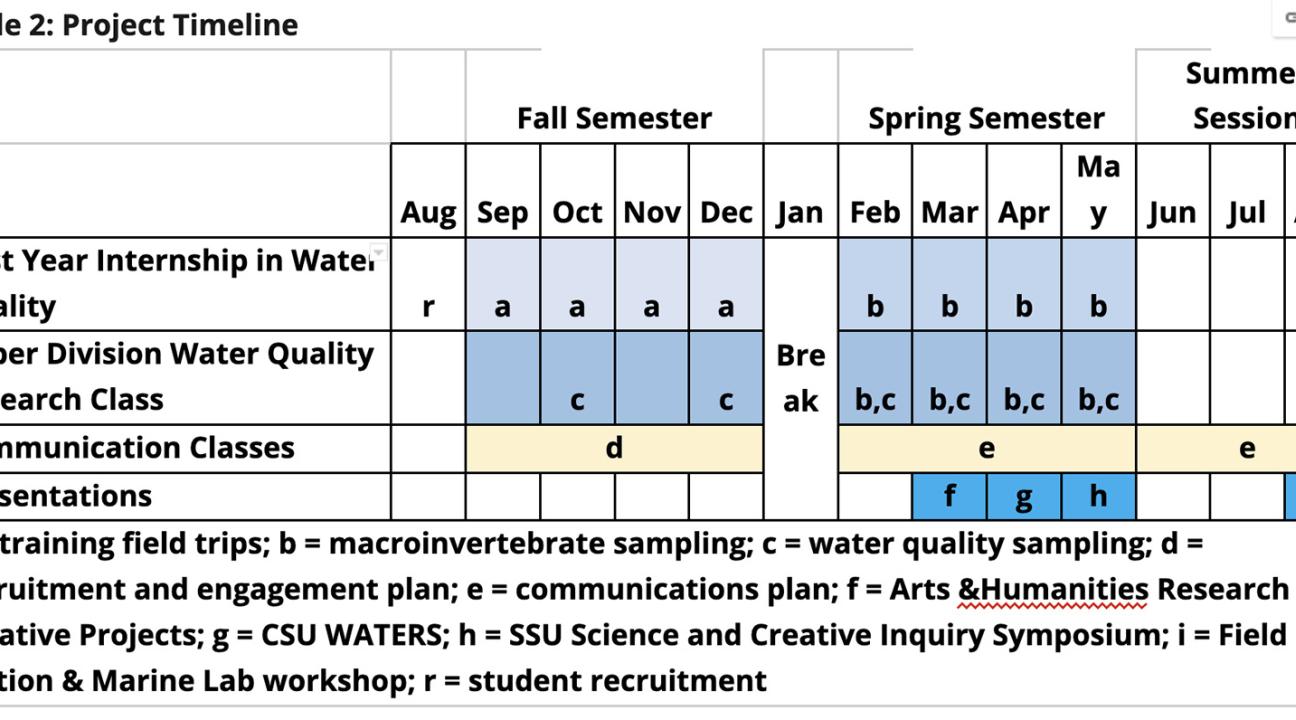SSU WATERS Grant Recipient Jacquelyn Guilford: Analysis of Water Quality Near Homeless Encampments Along Santa Rosa Creek and Russell Creek
SSU’s Center for Environmental Inquiry congratulates several faculty members who have been awarded WATERS grants, made possible through a CEI partnership with Sonoma Water. We are profiling each recipient in a series of articles highlighting their work.
The recent increase in homelessness across California is testing the fabric of communities and the agencies, governments and organizations that serve them. Widespread efforts to prevent people from becoming homeless are continuing, yet many are concerned about the health of people experiencing homelessness and the unanticipated effects on water quality. These are complex challenges that require multi-organizational and multi-disciplinary solutions based on the best information available. A first step is determining the extent of the problem.
Geography, Environment, & Planning Professor Dr. Jacquelyn Guilford is funded by the WATERS Collaborative to engage students in research designed to determine the source or sources of water quality impairment along Santa Rosa’s Russell Creek – in particular whether people experiencing homelessness may be impacting water quality via encampments along the creek. Understanding potential impacts to water quality can help agencies design solutions to support those experiencing homelessness, while also ensuring clean water for everyone in the community.
Last year, Guilford and student researchers found high levels of fecal bacteria on Russell Creek. Russel Creek runs through residential, urban, recreational, and rural areas. It begins in the Fountaingrove neighborhood in northeastern Santa Rosa. It then flows under Highway 101, past Kaiser hospital, through a densely populated area in NW Santa Rosa, and then into Piner Creek on the west side of Santa Rosa. There, it connects with Santa Rosa Creek and ultimately the Laguna de Santa Rosa.
“We identified high levels of fecal bacteria near the Kaiser Permanente hospital,” Guilford said. “But we don’t know the source. We need to know if the source of this fecal contamination is from humans, pets (dogs), and/or from wildlife such as birds.”
The study is part of Rising Waters, a multi-disciplinary research effort coordinated by the Center for Environmental Inquiry (CEI), that engages faculty and students in water-related sustainability and resilience challenges of the North Bay. “A critical piece of this multi-year investigation is to investigate the relationships between homelessness and water quality. We are not only interested in finding out if homelessness is a significant source of water quality impairment, but also in determining the quality of the water that homeless individuals are exposed to,” said CEI Project Development Lead Dr. Chris Halle.
Guilford has documented many types of activities along Russell Creek. People walk their dogs, people experiencing homelessness may stay overnight or for longer periods, and wildlife and birds use the creek. “If we find that the source of the contamination is humans, we will further investigate whether it comes from overnight use along the creek or it is transported from other areas via storm drains,” Guilford said.
Guilford and her student research team hope the results can be used by residents, city agencies, and other stakeholders to implement solutions and develop policies that improve water quality and provide services and caring for everyone who uses and relies on Russell Creek. Guilford and the student team presented the results of their work at the CSU WATER symposium and received the “Best Water Poster” award at the 2023 SSU Science Symposium.
Student researchers said this experience helped them better understand real-world research processes, as well as how the sector works.
“This class gave me a great introduction on how to conduct research, from formulating a research question to making conclusions based on quantitative and qualitative findings,” said senior Environmental Systems student Athena Everson. “I’m more prepared for a job in the field of environmental science, especially considering my passion for hydrology and maintaining our current water resources.”
Hailey Elson, a senior studying Environmental Policy and Management, said she now understands more about the entire process of research and analysis. “Participating in this class has given me skills in water sampling fieldwork, analyzing data, and discussing what we believe is happening from the data we are obtaining.”
“I witnessed the importance of maintaining collaboration with other community stakeholders as well as the positive effects of local regulation on our natural resources,” said Lily Roberts, a senior, majoring in Environmental Studies. “I gained many skills related to water quality testing that I otherwise would have never learned from other classes. This experience played a huge role in landing me an internship with the City of Santa Rosa's Water Department!"
“This course gave me insight into careers related to water management,” said senior Environmental Management and Policy student Molly Clemons.
This research is part of the Rising Waters project, and the City of Santa Rosa Department of Water is a collaborating partner.
The Center for Environmental Inquiry mobilizes faculty, students and community to solve environmental challenges of the North Bay. To get involved; learn more about our programs, classes, or projects; or to donate, please contact Center Director Claudia Luke at [email protected](link sends e-mail) or visit cei.sonoma.edu.







